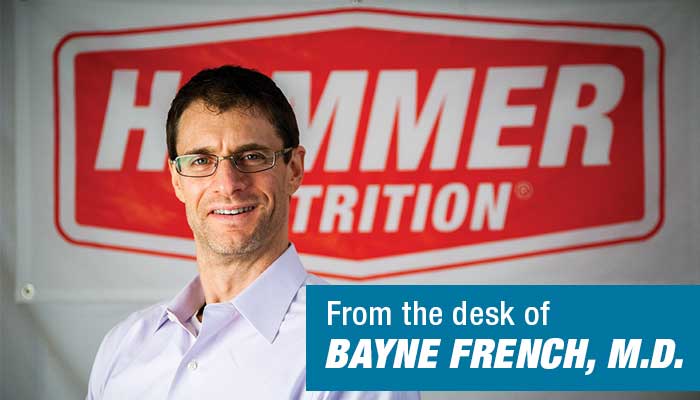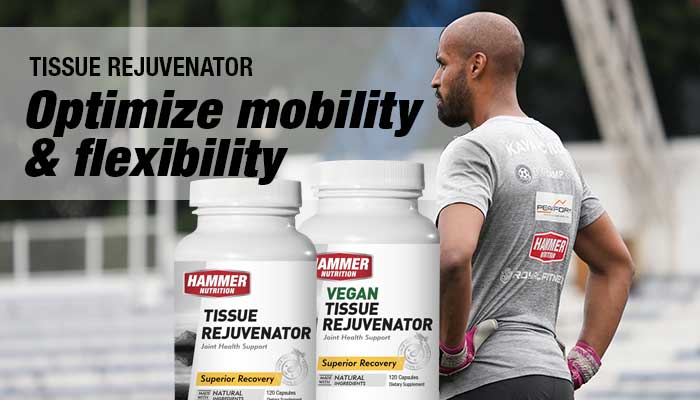
BY BRIAN FRANK
Intermittent Fasting - two things to consider
1) what “eating window” time of day is best for you?2) Your body type and IF
I have practiced IF on an off for the past 5 years or so and while the results can be impressive, it does take some getting used to, including initial feelings of hunger and empty stomach growling. These do subside in the first weeks as your body adjusts to this new pattern of caloric intake. However, I have not seen much written about employing IF during periods of mid to high volume training and or intensity. Another area that receives little, if any, attention in the IF discussion is body type and how each may respond. I’m scratching the surface on these subjects here and will continue to expound on them in future issues of EN and ENW.
I have most often practiced and found the 16 hours of fasting with an 8 hour “food” window to be the easiest to manage with my work and workout schedule. My eating hours are being between 11 AM and 7 PM, or noon to 8 PM in the summer when I want to ride and eat later in the day. For those of you who mostly workout after work, this pattern works well and allows for consistent use of Whey/Glutamine before bed for HGH spike after fasting for 3 hours or more.
However, for those of you who do your training early in the morning, you are accustomed to working out from a fasting state, so this is not new. However, waiting until 11 or noon to begin eating is challenging from both hunger and recovery/repair perspectives. If this is how you train most of the time, shifting your 8 hour food window earlier in the day is necessary, to say 8-9 am to 4-5 PM. This allows you to take maximum advantage of your post workout recovery window, but makes for an early dinner and a long evening with no snacking. But, if you want to lean out a lot, this eating pattern works extremely well.
Still another option when workout volume and intensity are high, shortening the fasting window to 14 or even 12 hours will still give excellent results and allow you to have a long enough eating window to have a good meal after both your AM and PM workouts.
Intermittent Fasting, Body Type - another consideration
When I first became serious about weight lifting in college, I studied Bill Sheldon’s three Somatypes; Ectomorph - lean, hyper metabolism, Endomorph - naturally higher body fat, slower metabolism and the Mesomorph - the perfect mix of the two, Adonis figure, olympic athlete, etc. It was then I learned, much to my chagrin, that I am an Endomorph.
I think it’s critical to know your body type, so you knew how to train and eat.
However, today Somatypes does not seem to be much discussed or applied to training and diet principles, which is unfortunate. When considering Intermittent Fasting, this should be the starting point in my mind.
Ectomorph - Being lean and maintaining your ideal weight is so easy, you can’t help it. I do not think that Ectomorphs thrive on IF. Don’t get me wrong, it can be done, but it won’t be fun! Ectomorphs are necessarily fixated on not losing weight/lean muscle mass and have to eat sufficient calories every day and always consume calories during training to avoid this problem. Over the age of 50 gradual muscle loss is a major concern that should be proactively addressed with adequate daily protein intake and avoiding long periods without food during the day.
Mesomorph - IF works well to get super lean and shed those couple of pounds that you don’t need. You are so gifted naturally, you don’t really need much help. Of course, if you do get serious about your diet and practice IF, you likely will be winning most of the time.
Endomorph - That’s me and is the most common female body type. We struggle with easy weight gain, must restrict calories and workout to prevent it. We are prone to insulin resistance, hypoglycemia and type II diabetes later in life. On the flip side, we can be fat burning machines that never bonk! Honestly, without a doubt, Intermittent fasting combined with sugar and starch restriction is what our body’s crave and thrive on! To be clear, eliminating the sugar and starchy carbs is the #1 factor, but IF specifically improves insulin function, increases HGH levels while also reducing levels of our hunger hormone, Grelin.
** These statements are not intended to diagnose or treat any medical condition or give medical advice. You should consult a licensed health care professional before making significant changes to your diet or supplement routine.










5 comments
Message: Hello, can you’re body type change with age? As a youth, I could not gain weight, but that is certainly not true as a middle age adult.
Answer: Thank you for this excellent question; it most likely will spawn another article on this subject! While body types don’t change over time – Ectomorphs can’t become Endomorphs and vice versa. However, all three body types experience a slowdown in metabolism with age, along with declining levels of all body hormones (Darn it!). Exercise is a double-edged sword here – it helps to boost metabolism and burn more calories, but it also tends to have a depressing effect on hormone levels (which is why sleep hygiene and getting a good night’s sleep is critical – for proper hormone function). From a dietary standpoint, it’s my sincere belief that IF, or compressing our “calorie intake window” to roughly 8 hours per day, along with sugar/starch (aka carbs) avoidance/moderation becomes increasingly important as we age and allows us to avoid overworking our pancreas and the slide down the slippery slope from insulin resistance to hypoglycemia to type 2 diabetes that is so common today for people over 50. BDF
Message: I’m an ectomorph. 6’3" and 175 pounds. I average 2950 calories a day from metabolism & movement. I write to say: IF works great for me. INTERMITTENTLY. I have fast days AND feast days. (I suspect that’s more likely the primal blueprint, anyway.) My fast days are usually warrior-ish (20/4. Plus or minus.) Point is: no breakfast or lunch.* Most workouts (hike, bike or weights) fasted. BUT, I do eat a lot in my eating window. I never go 24 hours or longer fasted. And I don’t think 7 days a week would work for me. I also use exogenous ketones. * Like Dr. French , I really don’t worry about details. Sometimes I just skip breakfast. Some days lunch, especially if work out before and/or after. Very rarely, skip dinner. Whatever. I’m an adjusted fat burner.
Answer: Thank you for the details comments and for showing us that IF doesn’t have to be rigid or extremely difficult to follow and that it doesn’t have to be all or nothing. Touching on the question of whether one always has to fuel during workouts there is great too. It’s also fascinating to hear of the experiences of someone with a totally different body type than me (Endomorph). It brings to mind a couple of my “ism”s in this area – Food is overrated, and never sacrifice sleep (or any other fun/necessary activity) for food. BDF
Message: Hi, great post ! What about if you are doing IF and plan to eat after exercise 8-9am but can you consume some carbs, electrolytes, HEEd while cycling prior to breakfast ? Let’s say you ride 7-9am …
Answer: Thank you for this excellent question, as it is one that most of us must address when considering IF and our knowledge that it’s optimal to uptake carbs and protein immediately after a workout to minimize recovery time. I’ll be addressing this subject and its branches in detail in upcoming issues of ENW and EN, but in the meantime, and without writing the article here, I’ll do my best to address this concisely. First, it really depends on your primary goal. If it’s peak performance and nothing else, IF can be employed with discipline and the willingness to forego normal meal social time. This athlete needs to consume a good bit of calories during their workouts and immediately following. So, they would likely need to do all of their training DURING their eating window. On the other hand, and I’m going to go way out on the limb here and suggest that when I get out of bed at 6:30, have a glass of water and a cup of black coffee and then go out for a two-hour ride, consuming 150 per hour of hammer gel along the way, although I am no longer fasting, I am in an “active fat-burning state,” as opposed to a “digestive state” with a ball of solid food in my stomach. Furthermore, when I do this, I continue to fast after I finish riding until 11 am. It may compromise recovery a bit, but it allows me to keep burning fat while I am sitting at my desk typing until 11 am when my window opens. I’m going to have an in-depth discussion about this with Steve and Bayne report back to you and everyone else in upcoming issues. Thank you again for opening the door for this discussion. BDF
Message: Endomorph – Thanks for letting me know. I have experimented with IF for about 4 years. I am not consistent with it, but hope to make it a part of my discipline. Great series.
Answer: I learned about the three body type when I first got serious about weight training in college and is more commonly known in the strength world. However, I have found it to be equally important for endurance athletes using that as a key to the different fueling habits that work best for each of the body types. BDF
Message: Why does the author of this article have a guy’s name (Brian) but the last paragraph in this article says that she is an endormorph woman?
Answer: Sorry if I was not more clear regarding the body types. The Ecto/Meso/Endo body type is universal and very much not gender-specific. The Endomorph body type naturally runs higher body fat and is the most common body type among both males and females from my experience. There are many books and websites that are specifically geared toward one body type or another, and if interested, I would encourage you to read further on the body type you think most closely resembles you. We’ll also discuss this more in ENW and upcoming issues of Endurance News, as I believe it’s a critical factor in our diet and fueling practices. BDF